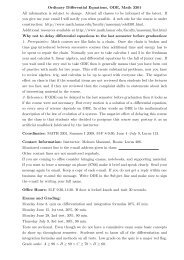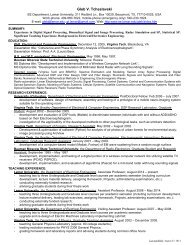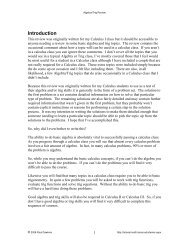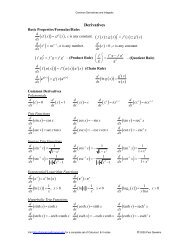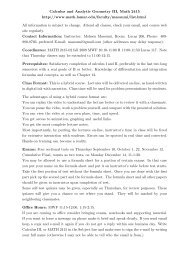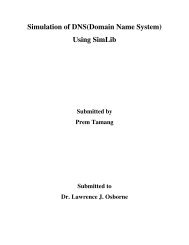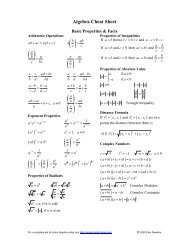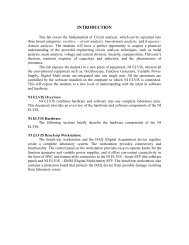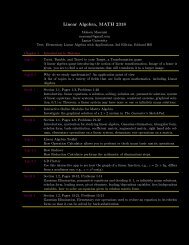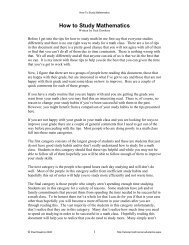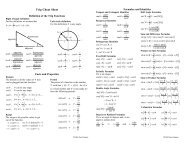LUEE 2012 Self-Study Report (PDF) - Lamar University Electrical ...
LUEE 2012 Self-Study Report (PDF) - Lamar University Electrical ...
LUEE 2012 Self-Study Report (PDF) - Lamar University Electrical ...
You also want an ePaper? Increase the reach of your titles
YUMPU automatically turns print PDFs into web optimized ePapers that Google loves.
CRITERION 6. FACULTYA. Faculty QualificationsThe Department of <strong>Electrical</strong> Engineering has six full-time faculty members to include thedepartment chair. In addition, one of those faculty is an endowed Chair. We also have a jointappointment faculty member from Physics and a part-time instructor. Since our last visit, wehave two full professors, three associate professors, one assistant professor and an instructor(not including the joint appointment). Many faculty members participate in professionalactivities such as presenting talks in local, national and international conferences, serving aschairs of sessions for such conferences, and serving as the members of the editorial boardsfor professional publications as well as holding leadership positions in the IEEE. Some of thefaculty members are also involved in consulting and writing books.Two new faculty have joined the department since 2006, they are:2008 Gleb Tcheslavski, Ph.D., P.E. Assistant Professor2007 Koji Hirano, MSEE, InstructorThe faculty is the heart of our program and consists of six full-time professors all with Ph.D.degrees in electrical engineering. Please consult Table 6-1 for specific data. The faculty iswell-distributed in expertise to cover the foundational areas of our program and we includeoverlap between the undergraduate and graduate coursework to provide advancedcoursework for seniors as part of their elective course choices. The basic curricular areas ofthe program have previously been listed, which we call the paradigmatic areas, but we revisitthem here: circuits, electronics, signals and systems, electromagnetics and computers.Faculty coverage of them is shown in Figure 6-2.The state required teaching load in the EE Department is twelve load units per semester. Inaddition to teaching in the classroom, most faculty members supervise graduate andundergraduate students in such courses as individual studies, research, thesis and dissertation,and seminar. Teaching load varies from two to four classroom lecture courses per semesterdepending on activity in research and graduate supervision.New faculty members lighter teaching assignments to give them time to establish theirresearch programs and adapt themselves to the department. Faculty have the option to buyoutfrom a course during each semester to a minimum of one course. In the last five years wehave used about three adjunct professors to cover all our courses. New faculty are given startupfunds, space for their laboratory, and reduced teaching loads. They are also givenpreference for summer support.Faculty performance evaluation is conducted every calendar year. The evaluation is a criticalelement in the assessment of the success of the program in meeting its educational objectivesand in the determination of future objectives. The primary purpose of faculty evaluation is toassess contributions of faculty members to the program, and more broadly, to the mission of32




